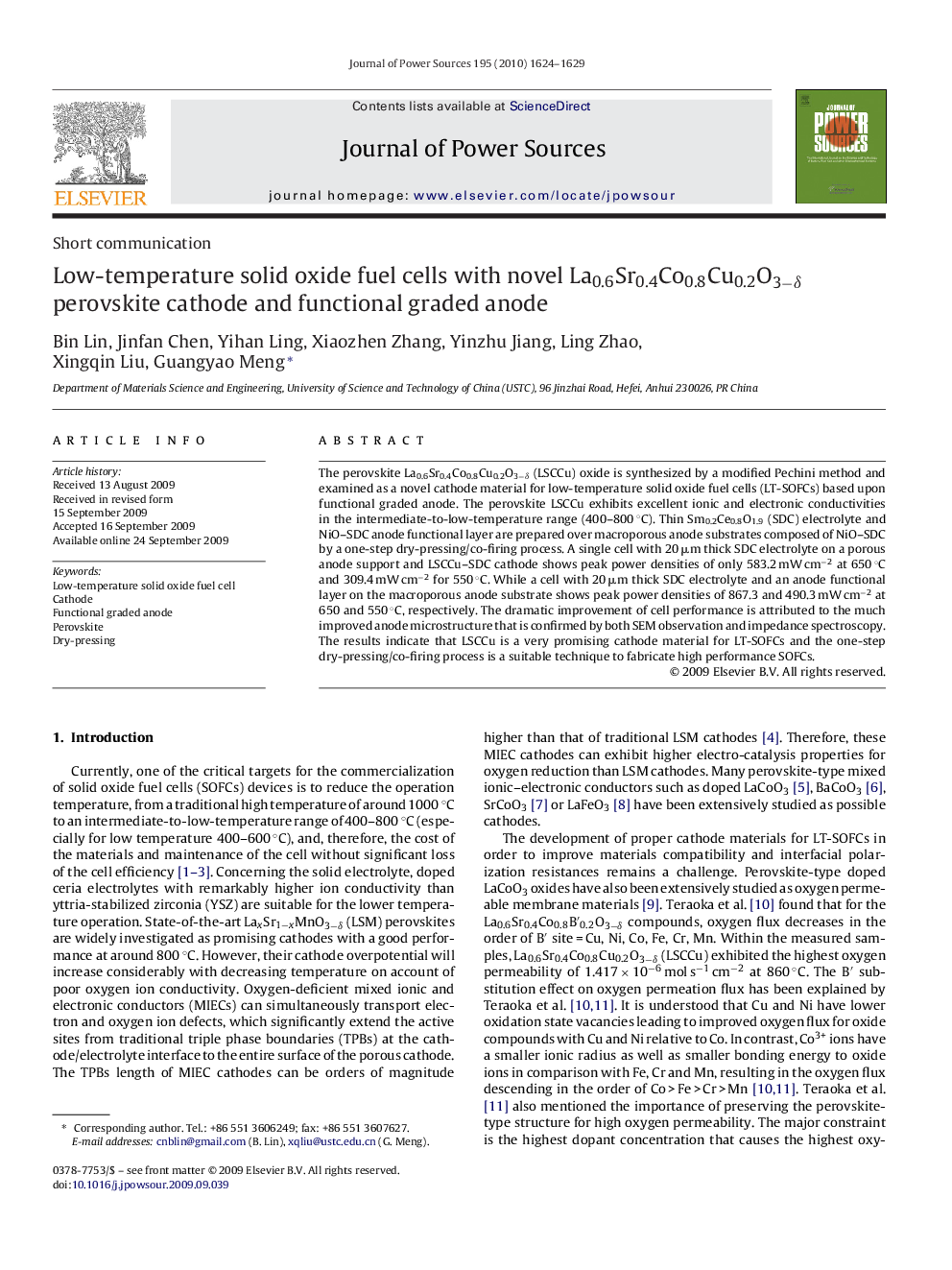| Article ID | Journal | Published Year | Pages | File Type |
|---|---|---|---|---|
| 1289681 | Journal of Power Sources | 2010 | 6 Pages |
The perovskite La0.6Sr0.4Co0.8Cu0.2O3−δ (LSCCu) oxide is synthesized by a modified Pechini method and examined as a novel cathode material for low-temperature solid oxide fuel cells (LT-SOFCs) based upon functional graded anode. The perovskite LSCCu exhibits excellent ionic and electronic conductivities in the intermediate-to-low-temperature range (400–800 °C). Thin Sm0.2Ce0.8O1.9 (SDC) electrolyte and NiO–SDC anode functional layer are prepared over macroporous anode substrates composed of NiO–SDC by a one-step dry-pressing/co-firing process. A single cell with 20 μm thick SDC electrolyte on a porous anode support and LSCCu–SDC cathode shows peak power densities of only 583.2 mW cm−2 at 650 °C and 309.4 mW cm−2 for 550 °C. While a cell with 20 μm thick SDC electrolyte and an anode functional layer on the macroporous anode substrate shows peak power densities of 867.3 and 490.3 mW cm−2 at 650 and 550 °C, respectively. The dramatic improvement of cell performance is attributed to the much improved anode microstructure that is confirmed by both SEM observation and impedance spectroscopy. The results indicate that LSCCu is a very promising cathode material for LT-SOFCs and the one-step dry-pressing/co-firing process is a suitable technique to fabricate high performance SOFCs.
